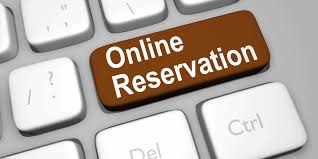Restaurant Reservation Systems: Basic vs Advanced
A restaurant reservation system is a crucial tool in the modern hospitality industry. It streamlines the booking process, improves efficiency, and enhances the overall customer experience. Let’s delve into the key features of basic and advanced restaurant reservation systems.
Simple Restaurant Reservation System Features

A simple system for restaurant reservation often requires human intervention to actually accept and confirm the reservation.
It can be as simple as an online form a customer can complete indicating the date, time and number of people in their party.
An email or text message will be sent to persons designated to accept & confirm reservations. They can then contact the customer directly to finalize the reservation.
Basic Reservation System Features

A basic reservation system primarily focuses on the fundamental aspect of booking a table at a restaurant. Here are some of its key features:
- Online Booking: Allows customers to reserve tables via the restaurant’s website or app, eliminating the need for phone calls.
- Table Management: Enables restaurants to manage their seating capacity efficiently, reducing wait times and improving customer satisfaction.
- Reservation Tracking: Tracks all reservations, providing a clear overview of booked and available tables.
- Customer Database: Stores basic customer information, such as contact details and reservation history, which can be used for future reference.
Advanced Restaurant Reservation System Features

An advanced reservation system, on the other hand, offers a plethora of features that go beyond the basics, enhancing operational efficiency and customer engagement. Here are some of its standout features:
- Waitlist Management: Allows walk-in customers to join a digital waitlist and receive notifications when their table is ready.
- Pre-Ordering Option: Enables customers to pre-order their meals at the time of booking, leading to quicker service and higher table turnover.
- Integrated Payment System: Facilitates online payments, making the process more convenient for customers and reducing the workload for staff.
- Loyalty Program Integration: Integrates with the restaurant’s loyalty program, allowing customers to earn and redeem points with each reservation.
- Advanced Analytics: Provides detailed insights into customer behavior, reservation trends, and table utilization, aiding in strategic decision-making.
- Automated Marketing: Leverages the customer database to send personalized emails or text messages, promoting special offers and events.
Multi-Channel Booking: In addition to the restaurant’s website or app, allows reservations through various platforms like social media, Google.
Most of the advanced features can be tackle in other analytics and marketing tools if you have the fundamental data from a decent reservation system.
USE THE RESERVATION DATA!

Your reservation system data can offer you tremendous value if you properly analyze it.
It can help you spot trends by day, week, month, and hour so you can improve staffing plans, purchasing and promotions.
You can grow your customer relationships at a deeper level by identifying customer specific opportunities for promotions.
Leveraging an online reservation system to it fullest potential can help improve sales and margins across your operations.
